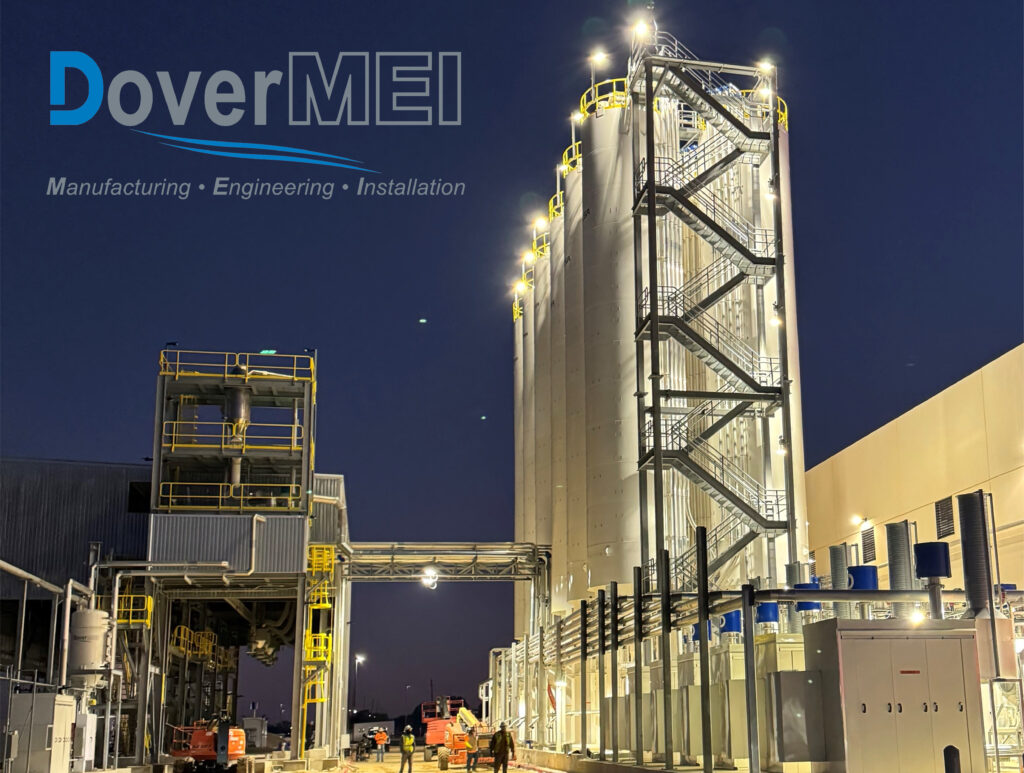Silos play a crucial role in various industries, including agriculture, manufacturing, and construction, by providing efficient storage solutions for bulk materials. Choosing the right type of silo is essential for maximizing storage efficiency, minimizing waste, and ensuring product quality. Below, we explore the most common types of silos, their applications, and how to determine the best one for your needs.
Tower Silos
Overview
Tower silos are tall, cylindrical structures used primarily for storing grain, silage, and other agricultural materials. These silos are often made of concrete, steel, or fiberglass and can reach heights of up to 100 feet or more.
Key Features
- Vertical storage maximizes space efficiency.
- Made from durable materials like reinforced concrete, steel, or fiberglass.
- Equipped with aeration systems to prevent spoilage and maintain material quality.
- Gravity-fed unloading system reduces manual labor.
Best Uses
- Agriculture: Storing silage, corn, and grains for livestock feed.
- Cement Industry: Storing cement powder before mixing.
- Food Processing: Keeping bulk ingredients such as flour and sugar.
Advantages
✔ Space-efficient design allows for more storage in a small footprint.
✔ Long-term storage capability ensures material freshness.
✔ Automated unloading system reduces handling costs.
Disadvantages
✖ High initial investment and construction costs.
✖ Requires regular maintenance to prevent structural issues.
Bunker Silos
Overview
Bunker silos are horizontal storage systems that use a three-sided concrete or metal structure with an open top. These silos are common in dairy and livestock farming for storing silage.
Key Features
- Constructed with reinforced concrete or steel panels.
- Materials are packed down using heavy machinery.
- Open design allows for easy access and quick loading/unloading.
Best Uses
- Dairy Farms: Storing silage for cattle feeding.
- Biogas Plants: Holding organic material for fermentation.
- Industrial Applications: Bulk storage of construction aggregates.
Advantages
✔ Low cost and easy construction compared to tower silos.
✔ Faster loading and unloading, making it ideal for large-scale farming.
✔ No height limitations, allowing storage of vast amounts of material.
Disadvantages
✖ Exposure to weather conditions can lead to spoilage.
✖ Requires a large area for installation.
Bag Silos
Overview
Bag silos are flexible, temporary storage solutions that use long, airtight plastic bags to store silage, grains, and other bulk materials. These silos are an excellent choice for farms with limited space or short-term storage needs.
Key Features
- Made of UV-resistant polyethylene to withstand environmental conditions.
- Sealed design prevents oxygen exposure, reducing spoilage.
- Can be placed on any flat surface, eliminating the need for permanent infrastructure.
Best Uses
- Small to medium-sized farms with fluctuating storage needs.
- Emergency storage during peak harvest seasons.
- Temporary storage for feed and grains.
Advantages
✔ Low-cost storage option with minimal setup requirements.
✔ Portable and scalable, allowing flexibility in storage management.
✔ Reduced spoilage risk due to airtight sealing.
Disadvantages
✖ Limited lifespan compared to permanent silos.
✖ Prone to damage from rodents and extreme weather.
Other Specialized Silos
While tower, bunker, and bag silos are the most common types, there are specialized silos for specific applications:
Concrete Silos
- Used in construction and cement industries.
- Highly durable and resistant to environmental conditions.
- Requires significant upfront investment.
Steel Silos
- Ideal for grain storage, chemical industries, and bulk powders.
- Rust-resistant coatings improve longevity.
- Easy to clean and maintain.
Fabric Silos
- Made from high-strength woven materials.
- Used for storing lightweight materials like plastic resins.
- Cost-effective and quick to install.
How to Choose the Right Silo for Your Needs
When selecting a silo, consider the following factors:
Storage Capacity Needs
- Large-scale operations benefit from tower or bunker silos.
- Small or temporary storage needs are best met with bag silos.
Material Type
- Grain and silage: Tower or bunker silos.
- Cement and aggregates: Concrete or steel silos.
- Temporary feed storage: Bag silos.
Budget Constraints
- High budget: Tower and concrete silos.
- Medium budget: Steel or bunker silos.
- Low budget: Bag silos.
Space Availability
- Limited space: Tower silos.
- Open land: Bunker silos.
- Portable storage: Bag silos.
Conclusion
Selecting the right type of silo is crucial for efficient storage, cost savings, and operational effectiveness. Whether you need a permanent structure like a tower silo, a cost-effective bunker silo, or a flexible bag silo, understanding their pros and cons ensures you make an informed decision.
(864) 473-5054 | zw@dovermei.com
(713) 690-5200 | Texas
(864) 472-6456 | South Carolina

